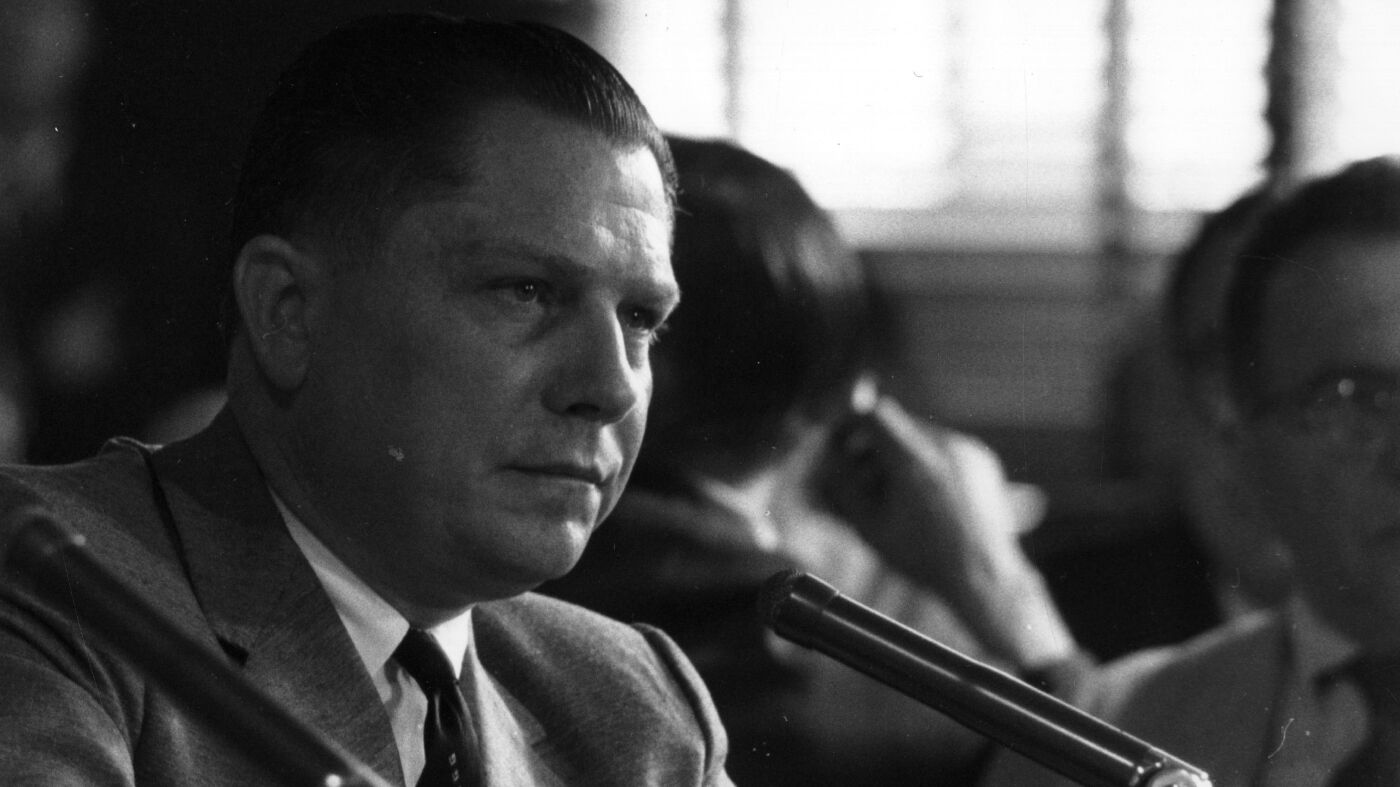The Enduring Enigma: Jimmy Hoffa’s 50-Year Disappearance
A Titan of Labor
James Riddle “Jimmy” Hoffa, born in 1913, emerged from the coal mines of Pennsylvania to become one of the most influential figures in American labor history. His father’s early death left Hoffa with a deep empathy for the struggles of working-class families, a sentiment that would later fuel his relentless advocacy for labor rights. By the 1950s, Hoffa had transformed the International Brotherhood of Teamsters into a powerhouse union, representing over a million workers and wielding unprecedented influence in both the labor and political arenas.
Hoffa’s leadership style was as controversial as it was effective. He was known for his ability to mobilize massive support, often through a combination of charisma, intimidation, and strategic alliances. His tactics earned him both admirers and enemies, as he navigated the complex landscape of labor negotiations, political lobbying, and, inevitably, organized crime. The Teamsters Union under Hoffa’s leadership became a symbol of both the power of collective bargaining and the darker side of labor politics.
The Day He Vanished
The events of July 30, 1975, remain etched in the annals of American mystery. Hoffa, then 62 years old and recently released from federal prison, was scheduled to meet with two prominent figures: Anthony Provenzano, a New Jersey Teamsters leader, and Anthony Giacalone, a Detroit mobster. The meeting was set to take place at the Machus Red Fox restaurant in Bloomfield Township, Michigan. Hoffa arrived at the restaurant but was never seen again.
Witnesses reported seeing Hoffa get into a maroon Mercury Marquis Bougham, but the vehicle’s driver and the subsequent events remain shrouded in speculation. The car was later found abandoned, but Hoffa was nowhere to be found. The lack of concrete evidence and the conflicting accounts of those present have only deepened the mystery surrounding his disappearance.
Theories and Speculation
The disappearance of Jimmy Hoffa has spawned countless theories, each more intriguing than the last. Given Hoffa’s well-documented connections to organized crime, many believe that the Mafia played a pivotal role in his fate. One prevalent theory suggests that Hoffa was killed to prevent him from regaining control of the Teamsters Union, a position he had held before his imprisonment. Others speculate that he was silenced due to his knowledge of sensitive information about the union’s dealings with the mob.
One of the most chilling accounts comes from Richard Kuklinski, a notorious mob hitman who claimed to have been involved in Hoffa’s murder. According to Kuklinski, Hoffa was stabbed in the head with a hunting knife and his body was placed in the trunk of Kuklinski’s car. The body was then allegedly disposed of in a manner that has never been confirmed. Other theories involve various Mafia figures and locations across the country, from New Jersey to Florida, each adding a layer of complexity to the already convoluted narrative.
Despite numerous investigations and searches, Hoffa’s body has never been found. This absence of physical evidence has allowed the mystery to endure, fueling speculation and capturing the imagination of the public for decades.
The Role of the FBI
The FBI has been actively involved in the Hoffa case since his disappearance, pursuing numerous leads and conducting extensive interviews in an effort to uncover the truth. The Detroit Field Office has kept the case open, underscoring the FBI’s commitment to solving this enduring mystery. Over the years, the FBI has focused on several potential burial sites, including a horse farm in Michigan and a landfill in New Jersey. Despite these efforts, no credible evidence has been found to confirm any of these locations as Hoffa’s final resting place.
The FBI’s involvement in the case highlights the challenges faced by law enforcement when dealing with complex investigations involving organized crime and powerful figures. The agency’s persistence in pursuing the case, even after five decades, reflects the significance of the mystery and the public’s enduring interest in finding closure.
The Enduring Impact
The disappearance of Jimmy Hoffa has had a lasting impact on American culture. The case has been the subject of numerous books, films, and television shows, cementing its place in popular imagination. Hoffa’s story serves as a cautionary tale about the dangers of power, corruption, and the murky connections between organized labor and organized crime.
The mystery surrounding his fate continues to fascinate and intrigue, drawing new generations into the search for answers. The case also highlights the challenges faced by law enforcement when dealing with complex investigations involving organized crime and powerful figures. The enduring nature of the mystery underscores the human desire for closure and the allure of unsolved enigmas.
A Cold Case, a Lingering Question
Fifty years on, the question remains: What really happened to Jimmy Hoffa? While the passage of time has diminished the likelihood of finding definitive answers, the allure of the mystery persists. The case stands as a testament to the enduring power of secrets and the human desire for closure. Perhaps one day, new evidence will emerge, or a long-held secret will be revealed, finally bringing an end to this chapter of American history. Until then, the legend of Jimmy Hoffa and the mystery of his disappearance will continue to captivate and intrigue.







